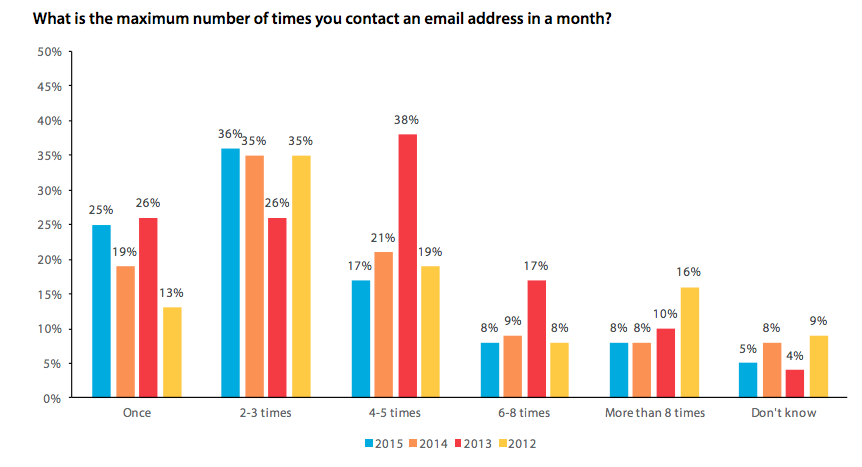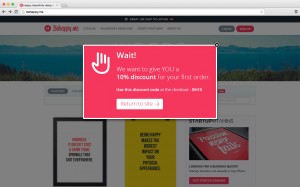Get Negative: Using Advertising Power Words To Your Advantage
Find out how power words can give your advertising the winning advantage!
Have you ever created a Facebook ad which you thought was brilliant, but sadly it failed to gain much traction? If your ads aren’t getting the attention they deserve, think about changing your focus from positive to negative. It’s not the usual scenario, but in the world of advertising, customers actually respond better to words that convey an approaching threat or impending disaster.
2017 Email Marketing Tips – Don’t End Up in The Spam Folder!
Anyone can shoot off an email newsletter to a client, but not everyone can achieve a good response rate. So what can you do to make sure your emails don’t get banished to the land of no return (in other words, the dreaded trash or spam folder)? Glad you asked! Check out these 2017 email marketing tips to find out more!
Carefully Consider Your Email List
Have you got a strong hub of email contacts? That’s great! But just because you’ve got the option to send your marketing emails out to a huge network of followers, doesn’t necessarily mean they are the best contacts to choose from. Think carefully about who your strongest followers are, and what sort of audience your content will make the biggest impact with.
As well as this, it’s also vital to plan the best time to send out your newsletters or marketing. For example, did you know that Tuesdays to Thursdays are considered the most popular days for sending emails? According to various studies, Tuesday is the number one choice, followed closely by Thursday and then Wednesday. That said, your contacts are also going to be slammed with competing newsletters on these days so you might want to experiment with emailing on a Monday or Friday.
Avoid Ending Up In The Spam Folder
While it’s natural that some customers may opt out of your content, having clients mark your emails as spam is a bigger problem; one that can have truly negative consequences for your business. To try and avoid this happening, consider the following:
Are you sending emails too frequently? According to Smart Insights, almost 50% of customers mark emails as spam due to high frequency. In fact, a 2015 study from DMA revealed that the majority of people believe it is best to email a contact only several times per month (36% believe 2-3 times per month is sufficient).
Have you enabled email authentication? If not, turn it on immediately! This can help protect you from hackers who may be sending out spam from your account without you even knowing.
All in all, spam email is a huge issue and not a position you want to find yourself in. Whether intentional or not, if your customers are hitting ‘spam’ instead of unsubscribing, you’ll want to spend some time investigating why this is happening. By sending your content to the best possible audience, on the right days, and not overwhelming them with too much at once, you should be on your way to a better response rate!
How many times have you found yourself reading through a website, only to be interrupted by a rudely-timed pop-up? You may be thinking, ‘‘is there ever a pop-up that isn’t rudely timed?’ It’s a good question, and one that millions of people around the globe undoubtedly have asked themselves as well. The fact is, many pop-up ads just don’t get through to us the way they used to – but does this mean that pop-up advertising is dead?
Recently it was announced that as of early 2017, Google plan to penalise the rankings of websites who use invasive mobile interstitials – specifically, pop-ups that either completely or severely take over a reader’s experience – to improve the online experience of readers.
Given that software such as AdBlock has been downloaded over 500 million times, and that ‘annoying ads’ have been cited as the number one reason for blocking a site, it’s fair to say that people aren’t too fond of ads (let alone invasive pop-ups). However, despite what you might think pop-up ads aren’t all bad. Take for example the following statistics from webmeup:
- Pop-ups can double your subscription rate
- Entrepreneur.com increased their sales by 162%, subscriptions by 86 % thanks to pop-ups
- Visual Website Optimizer upped sign-ups by 50% with a pop-up form on the site
So what’s the verdict? Basically, you just need to know which kinds of pop-ups to focus on. Below are two examples.
Exit Pop-Ups
It’s a fact that people switch off when bombarded with ads that either completely take over their internet experience, or disrupt them as soon as they log onto a site, but that’s not to say that pop-ups don’t have their place. An example? Exit pop-ups.
For example, unlike their more annoying counterparts, exit pop-ups only appear when a reader chooses to navigate away from a website. Essentially, they operate like a ‘last chance’ offer – allowing you to invite readers to stay on your page and to remember your brand. Discount offers are a fantastic example of an exit pop-up, and are one that can also instantly drive up your sales.
Subscription Hover Pop-Ups
Unlike traditional pop-ups, hover-style subscription boxes can also help you to convert more readers. For example, according to Ambitionally, social media scientist Dan Zarrella found that pop-up ads doubled his subscription rate without increasing bounce rate!
Speaking of hover-ads, you can also try adding these to the end of your webpage. After all, if a reader gets that far down the page, it’s likely they’ve been enjoying reading your blog post – and therefore, may be more likely to opt-in to a subscription or to click on your pop-up.
Despite what we think about pop-up ads, it’s clear that they can still be beneficial to both customers and advertiser – however, the key is to learn which ‘types’ of pop-ups work best for your business, and when to apply them. Above all, it’s important to look into creating non-intrusive ads that appeal to your customers!
If you’re looking for an expert marketing agency to help you on your business journey, and to increase your traffic and get the conversions your business has been lacking, contact GetMore Traffic today on 1300 332 256!
What is SEM, and why do I need an expert?
Here at GMT, we pride ourselves on helping small to medium businesses with their Search Engine Marketing. But what is SEM, and more importantly, why do you need a professional to help? Good question!
SEM is the practice of using digital marketing to increase the visibility of your website in search engine result pages (SERPs). Generally, this is done through ‘pay per click’ (PPC) advertising.
If you’ve ever noticed those little ads that appear at the top of Google’s search results when you type in a phrase or product, that’s what we’re referring to.
PPC & Keywords
These are AdWords adverts, and they’re created through the use of specific ‘keywords’. For example, say you own a Burleigh based camping business and you want to get people to purchase your waterproof jackets… By typing keywords into your AdWords account – tailored to your location and the specific product – you can target and draw customers who are in the ready-to-buy phase of their Google searching.
An example of some keywords you might use, could be:
- Waterproof jackets gold coast
- Waterproof jackets burleigh heads
However, before you start choosing keywords you first need to engage in comprehensive research to find out which ones will work best for your advert. This process is easier said than done, and believe me – you don’t want to guess your way through it. After all, the last thing you want to be doing is wasting your business’ money on ineffective PPC ads. Remember, each time a person clicks on your advert, you pay a certain amount of money – make sure you know what you’re doing.
Quality SEM Scores
When it comes to your Google AdWords campaign, another vital aspect to an excellent SEM campaign is to ensure you have high quality scores. Rated out of 10, this is a score given by Google, ranking your ad keywords to the relevancy of a users’ Google search query.
Why is this important?
Basically, the higher quality your score, the more you drive down your costs; allowing search engines to create lower minimum bids for your ad whilst retaining best exposure.
Contrary to what you may think, spending more on your keyword bidding doesn’t automatically mean that your ad will rank higher. As the below table demonstrates, the ranking position of your advert depends more on it’s ‘quality score’ than the amount of money.

Source: wordstream
As you can see, this isn’t something you want to get wrong – as it can result in you paying higher costs for adverts that aren’t even being seen. One common mistake that small to medium sized businesses often make, is not understanding the relationship between their landing pages and their ads.
For example, when a user types in a Keyword and then clicks on your ad (triggered in response), they should be directed to a landing page that also contains that keyword. If you’ve set this up correctly, Google will deem your landing page to be a good match, and consequently, boost your quality score. However, if your landing page isn’t relevant to your keyword and ad campaign…uh-oh – your Google score goes down.
The world of SEM is a complex and wonderful one, but as you can see, it’s also one that requires a lot of expertise and knowledge.
If you’re ready to move onto the next stage of your marketing and ensure your business is attracting as many leads as possible, give our expert team a call today on 1300 332 256


